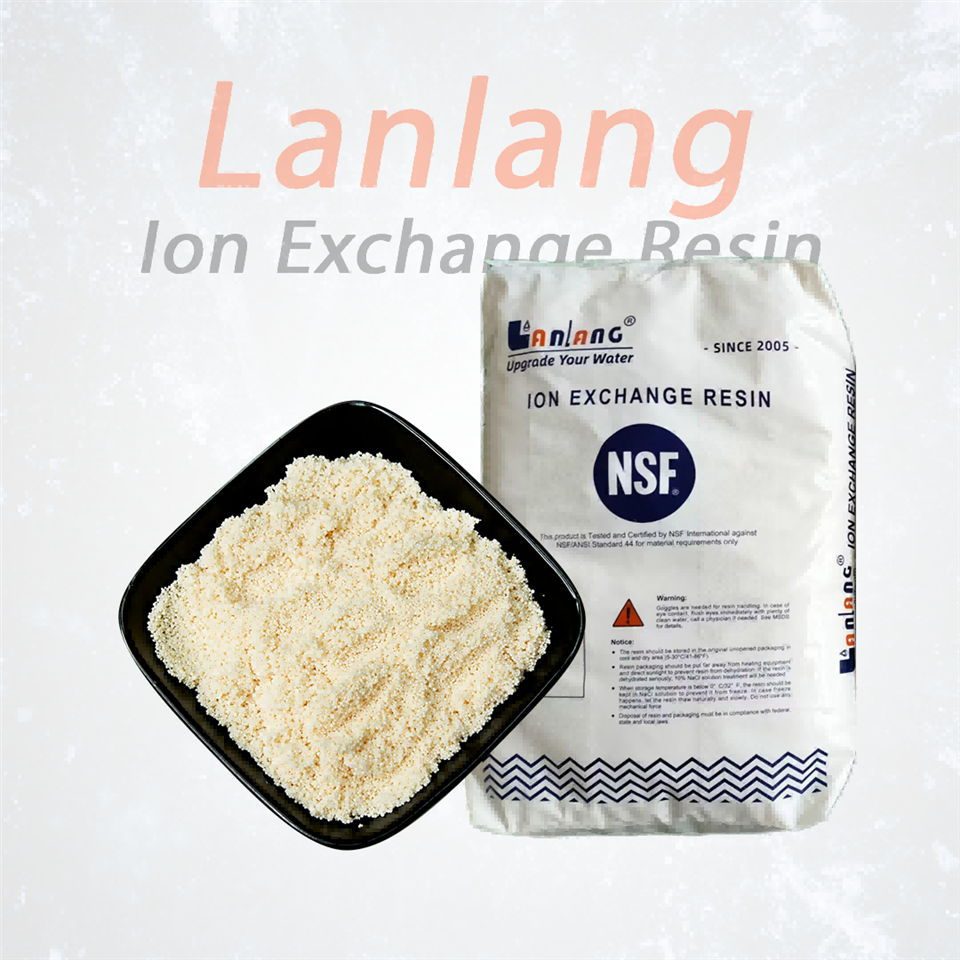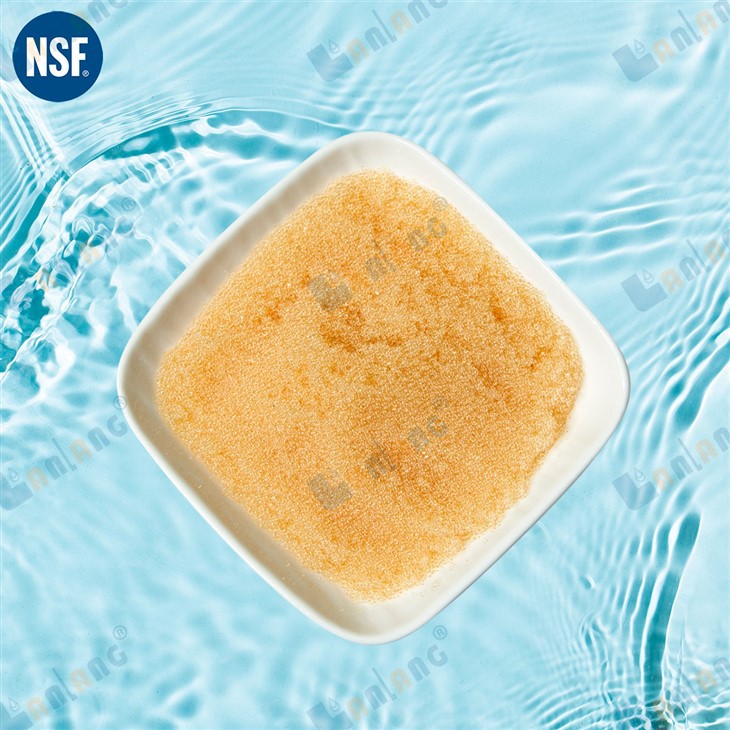As a seasoned supplier of ion exchange resins, I've witnessed firsthand the pivotal role these remarkable materials play in a wide range of industries. Ion exchange resins are the unsung heroes of water treatment, purification, and chemical processing, offering unparalleled efficiency and reliability. However, one aspect that often goes overlooked is the profound impact of regeneration chemicals on these resins. In this blog post, I'll delve into the intricate relationship between regeneration chemicals and ion exchange resins, exploring how they interact, the factors that influence this interaction, and the implications for resin performance and longevity.
Understanding Ion Exchange Resins
Before we dive into the role of regeneration chemicals, let's first understand what ion exchange resins are and how they work. Ion exchange resins are synthetic polymers with a porous structure that contains active sites capable of exchanging ions with the surrounding solution. These active sites are typically functional groups, such as sulfonic acid or carboxylic acid groups, which can attract and bind specific ions.
When a solution containing ions of interest passes through an ion exchange resin bed, the resin selectively captures the target ions through an exchange process. For example, in water softening applications, cation exchange resins exchange calcium and magnesium ions (the primary causes of water hardness) for sodium ions. This process effectively removes the hardness-causing ions from the water, resulting in softened water.

Once the resin becomes saturated with the target ions, it needs to be regenerated to restore its ion exchange capacity. This is where regeneration chemicals come into play.
The Role of Regeneration Chemicals
Regeneration chemicals are used to reverse the ion exchange process and remove the captured ions from the resin. The most common regeneration chemicals for cation exchange resins are sodium chloride (NaCl) solutions, while anion exchange resins are typically regenerated with sodium hydroxide (NaOH) solutions.
During the regeneration process, a concentrated solution of the regeneration chemical is passed through the resin bed. The high concentration of the regenerant ions (e.g., sodium ions in the case of cation exchange resins) displaces the captured ions from the resin's active sites, allowing the resin to regain its ion exchange capacity. The displaced ions are then flushed out of the resin bed with water, leaving the resin ready for another cycle of ion exchange.
Factors Affecting the Interaction between Regeneration Chemicals and Ion Exchange Resins
Several factors can influence the interaction between regeneration chemicals and ion exchange resins, including:
1. Chemical Composition of the Regeneration Chemical
The chemical composition of the regeneration chemical plays a crucial role in determining its effectiveness in regenerating the resin. Different regeneration chemicals have different affinities for the resin's active sites and the captured ions. For example, sodium chloride is a commonly used regenerant for cation exchange resins because sodium ions have a relatively high affinity for the resin's sulfonic acid groups. However, in some cases, other regenerants, such as hydrochloric acid (HCl) or sulfuric acid (H₂SO₄), may be more effective, depending on the specific application and the type of ions being removed.

2. Concentration of the Regeneration Chemical
The concentration of the regeneration chemical also affects the regeneration process. A higher concentration of the regenerant generally results in more efficient regeneration, as it provides a greater driving force for the displacement of the captured ions. However, using a too-high concentration of the regenerant can also cause damage to the resin, such as swelling, shrinking, or degradation of the resin structure. Therefore, it's important to use the appropriate concentration of the regeneration chemical based on the resin's specifications and the application requirements.
3. Contact Time
The contact time between the regeneration chemical and the resin is another important factor. Sufficient contact time is required for the regenerant ions to diffuse into the resin pores and displace the captured ions. If the contact time is too short, the regeneration process may be incomplete, resulting in reduced resin capacity. On the other hand, a too-long contact time can also lead to unnecessary waste of the regeneration chemical and increased operating costs.
4. Temperature
Temperature can also have a significant impact on the regeneration process. In general, increasing the temperature can enhance the diffusion rate of the regenerant ions and improve the regeneration efficiency. However, high temperatures can also cause thermal degradation of the resin, especially for some types of resins that are sensitive to heat. Therefore, it's important to operate within the recommended temperature range for the resin and the regeneration chemical.
Implications for Resin Performance and Longevity
The proper selection and use of regeneration chemicals are essential for maintaining the performance and longevity of ion exchange resins. Using the wrong regeneration chemical or improper regeneration conditions can lead to several problems, including:
1. Reduced Resin Capacity
Incomplete regeneration can result in a reduced ion exchange capacity of the resin, which means that the resin will need to be regenerated more frequently. This not only increases the operating costs but also reduces the overall efficiency of the ion exchange system.
2. Resin Fouling
Some regeneration chemicals may contain impurities or contaminants that can cause fouling of the resin. Fouling can reduce the resin's porosity and active surface area, leading to a decrease in its ion exchange performance. In severe cases, fouling can even render the resin completely ineffective.

3. Resin Degradation
Using a regeneration chemical that is incompatible with the resin or operating under improper conditions can cause chemical or physical degradation of the resin. This can lead to a loss of the resin's mechanical strength, stability, and ion exchange capacity over time.
Choosing the Right Regeneration Chemical for Your Application
As an ion exchange resin supplier, I understand the importance of choosing the right regeneration chemical for your specific application. Here are some tips to help you make an informed decision:
1. Consider the Type of Resin
Different types of ion exchange resins have different chemical and physical properties, and they require different regeneration chemicals. For example, strong acid cation exchange resins are typically regenerated with sodium chloride or hydrochloric acid, while weak acid cation exchange resins can be regenerated with a variety of acids, including acetic acid and citric acid. Anion exchange resins, on the other hand, are usually regenerated with sodium hydroxide.
2. Evaluate the Application Requirements
The application requirements, such as the type and concentration of the ions to be removed, the flow rate, and the operating temperature, should also be taken into consideration when choosing a regeneration chemical. For example, in food and beverage applications, it's important to use a regeneration chemical that is food-grade and meets the relevant safety standards.
3. Consult with an Expert
If you're unsure which regeneration chemical is best for your application, don't hesitate to consult with an expert. As a supplier of ion exchange resins, I have extensive experience in this field and can provide you with professional advice and guidance based on your specific needs.
Our Product Offerings
At our company, we offer a wide range of high-quality ion exchange resins for various applications. Some of our popular products include:
- Food Grade Macroporous Weak Acid Water Pitcher Cation Resin: This resin is specifically designed for use in water pitchers and other household water treatment applications. It is food-grade and meets the highest safety standards, making it ideal for removing heavy metals and other contaminants from drinking water.
- NSF Certified Ion Exchange Softening Cation Resin: This resin is NSF certified, which means it has been tested and approved for use in potable water applications. It is highly effective in removing calcium and magnesium ions from water, resulting in softened water that is gentle on your skin and appliances.
- Aquarium Ion Exchange Resin: This resin is designed for use in aquariums to maintain the water quality and remove harmful substances, such as ammonia and nitrates. It is safe for fish and other aquatic life and helps to create a healthy and stable environment for your aquarium.
Contact Us for Procurement and Consultation
If you're interested in learning more about our ion exchange resins or have any questions about regeneration chemicals, please don't hesitate to contact us. Our team of experts is always ready to assist you with your procurement needs and provide you with the best solutions for your applications. Whether you're a small business or a large industrial enterprise, we can offer you competitive prices, high-quality products, and excellent customer service.
References
- Helfferich, F. (1962). Ion Exchange. McGraw-Hill.
- Crittenden, J. C., Trussell, R. R., Hand, D. W., Howe, K. J., & Tchobanoglous, G. (2012). Water Treatment: Principles and Design (3rd ed.). Wiley.
- Roussy, Z., & Marshall, W. L. (1979). Ion exchange equilibria. I. Theoretical. The Journal of Physical Chemistry, 83(23), 3035-3041.
